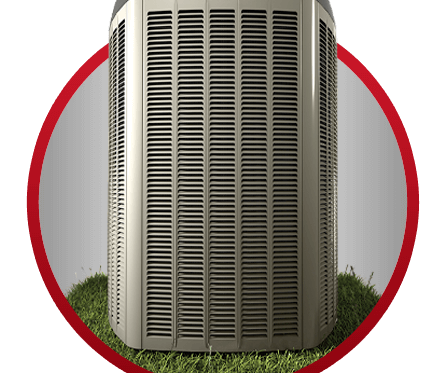When buying an air conditioner, you need to get the right size in terms of cooling capacity to ensure that your unit runs at peak efficiency. The cooling capacity is the area that your system can effectively cool. It can either be in BTUs, watts, or tons in an AC. One ton is equal to 1,200 BTUs, and one watt is equal to 3.41 BTUs per hour. This might seem technical, but it’s relevant to ensure that you buy an AC that can adequately cool your space. Here are things that you should know about BTUs.
1. What Do BTUs Stand for in Air Conditioning?
While doing your research on ACs, you will probably come across the acronym BTUs. BTU stands for British Thermal Unit and is critical in determining how well an AC can cool your house. BTUs in air conditioning indicate how much energy a unit needs per hour to draw warm air out of the house and recirculate cool air.
2. What Are the Effects of Picking an AC With Too Low or Too High BTUs?
Matching BTU requirements to room size is fundamental. The right-size unit will adequately cool your house, draw moisture and operate quietly. With the correct-size AC, the chances of components malfunctioning are lower, and the system will serve you longer.
If you buy a larger unit than required, it will cost you more upfront. Such a unit will cool your house quickly, shut off and kick on again. The AC won’t run long enough to dehumidify your house adequately. Your home will begin to feel clammy and uncomfortable. Humidity also attracts molds and mildew growth. When the AC recirculates mold spores throughout the place, it can lead to respiratory illnesses, trigger allergic reactions and trigger asthma symptoms.
The on and off cycling will also strain the compressor, and your system is more likely to break down often, calling for frequent repairs. This also reduces the AC’s lifespan, which means you may have to replace it soon. An oversized AC doesn’t sufficiently cool your house. This will result in some cold and hot spots.
On the other hand, a very small AC may not adequately cool all the rooms in your house. Thus, you might feel tempted to run it for long hours, which will only strain the unit, creating wear and tear. The constant running also results in high utility bills and lessens the life of your AC.
3. How to Calculate the Right BTUs Needed for Your House
To correctly size your AC, you need to calculate the required cooling capacity for your space. The primary factor for determining how many BTUs you need is the square footage. Begin by dividing your multidimensional house into more manageable sections. Measure the length and width for a rectangular space and multiply them to get the square footage. For circular rooms, get the distance from one end to the center, then calculate the area. If you have some triangular spaces, measure the length times the width, then divide by two. Get the total square footage.
Note that approximately 20 BTUs can cool square footage of space. So, multiply the answer by 20 to get the required cooling capacity in your house. For instance, if you have a 30-feet long and 35-feet wide room, multiply to get 1,050-square footage. Multiply your answer by 20 to get 21,000 BTUs. This is the minimum cooling capacity required for such a space.
A smaller place will require a little lower BTUs compared to a bigger house. Generally, an AC with 9,000 BTUs can cool a house between 400 to 450-square feet. If you have an area of about 500 to 550-square feet, you can opt for an AC with 12,000 BTUs. However, you should note that an AC’s performance can also vary from one brand to another. Therefore, check the manufacturer’s recommendations on how much space the AC can adequately cool.
4. What Other Factors Affect BTUs?
Besides the dimensions of your house, there are other factors that affect the cooling capacity required for your home. Consider the ceiling height. The square footage calculations work on the assumption that the house has an 8-foot ceiling. If your roof is higher than eight feet, increase the number of BTUs needed by 10%.
Don’t ignore the number of windows in your house. Rooms with east and west-facing windows tend to heat up more than the north and south-facing ones. If you have more than one window per room, add about 10% BTUs to your calculated amount. But if you leave your curtains and blinds drawn most of the time, you can reduce the cooling capacity by the same amount.
Your house insulation quality will also affect the cooling power required to maintain comfortable conditions. A well-insulated house contains the conditioned air longer, and it thus requires fewer BTUs. On the contrary, a poorly insulated house allows heat to seep through the floor, walls and ceiling, making it hard for your AC to achieve the desired temperature. If your home is heavily shaded or well insulated, you can decrease your BTUs by 10%.
Look around the house, and if there is any heat-producing equipment, they can have accumulated effects on your AC’s cooling loads. If you intend to cool the kitchen or any other room with heat-dissipating equipment, add 4,000 BTUs to your calculations. Make adjustments based on the climate in your home region. People living in hot and humid areas will need a more powerful AC than those living in cold and less moist areas.
The square footage calculations base the cooling capacity on the assumption that each space has two people. If there are more than two individuals in a single room at a particular time, add around 600 BTUs for each person.
You will need an AC with fewer BTUs to cool a multistory house than a ranch-style building. In a story building, the top floor receives more sunlight but acts as insulation to the ground floors. Therefore, add 10% to your BTUs for rooms on the upper floor and reduce those below. The open layout, extensive walls and roof spaces in a ranch-style house mean more air loss, so it needs a bit more BTUs.
Do You Need Help Calculating the Required BTUs to Cool Your House?
The right AC size will help you save on money and create comfortable indoor conditions for your loved ones. Although choosing the right AC size may seem daunting, it’s easier with the correct information. You can determine the proper cooling capacity needed for your space by using the above guide. If the process seems somewhat daunting, you can seek help. Professional technicians have the appropriate knowledge and tools to accurately measure and match an AC’s cooling power with the area it needs to cool. They will also check the unit’s compatibility with the existing ductwork and make the necessary adjustments to ensure that your system maintains its efficiency.
Should you need help choosing the right AC size, contact Reliable Air Conditioning. Our company specializes in AC and heating systems installation, repair and maintenance services in Gilbert, AZ, and the nearby areas. We also offer radiant heating, ductless mini-splits and indoor air quality services. Give us a call now and request our services.



